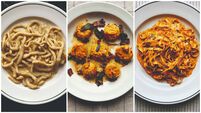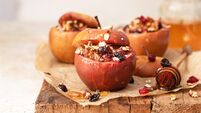Darina Allen: Acorn-fed jamón and other delicious Spanish treats
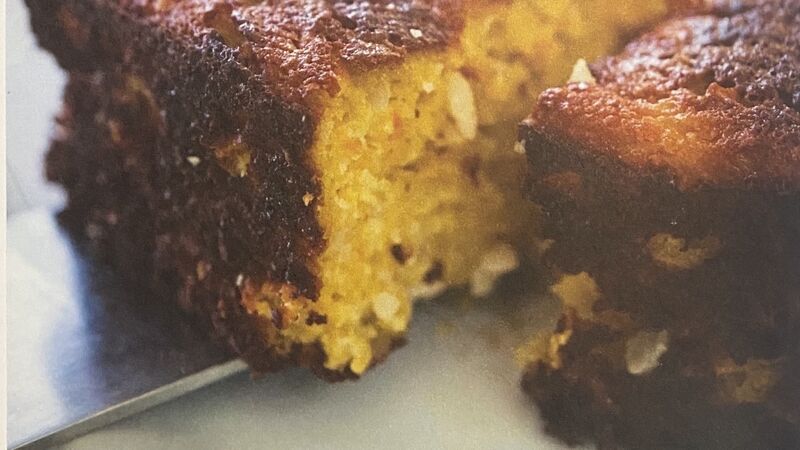
This citrus and honey cake from The Buenvino Cookbook by Jeannie and Sam Chesterton is delicious with coffee.
Last week I wrote about our Portuguese experience and some of the delicious food we discovered including the exquisite Flor da sal from the salinas in Tavira close to Faro.
This week’s column comes to you from Andalusia in Spain. Jamón country where the hams are made from the long-legged black Iberian pigs that have adapted to the terrain and roam freely through the dehesa (the woodland forests of cork oak, chestnut and pine trees) that cover much of the Iberian Peninsula.
The little town of Jabugo is the centre of the industry The quality of the jamón varies dramatically so I really wanted to understand the process that determines the finest cured ham: I arranged a tour of Cinca Jotas who arguably produce the very best acorn-fed jamón. Serrano is the generic name for Spanish cured hams just as prosciutto or Parma ham is the term for Italian ham.
As ever, the best hams start with the finest raw materials, the pigs must be 100% Iberico breed and acorn-fed. At Cinca Jotas, the pigs spend two years ranging freely in the woodland. It’s not just the breed but also the feed and curing process that contributes to the final quality. The finest hams come from pigs that feast on acorns throughout Autumn. They walk an average of 14kms a day, snuffling through the undergrowth for the three different varieties of oak that thrive in the dehesa. Each contributes to the final flavour, holm oak, the sweetest, cork oak, gall oak. Pata Negra de bellota, acorn-fed ham, is not only delicious, but it is low in cholesterol, high in beneficial oleic acid (a mono-unsaturated fatty acid) and omega 3-6-9.
At Cinca Jotas, each pig is allocated two hectares of woodland.
Each ham is unique: first the hams are trimmed of excess fat (which is gently rendered into superb lard), then weighed, classified, and buried in Atlantic salt from the salinas in Tavira. One day for every kilo of weight: in that time, the salt will penetrate 1 – 1 1/2cm into the ham, to preserve flavour and draw out excess moisture. The salt is then brushed off and the hams are washed, hung and rotated in special curing rooms for 2-3 years. Once the hams are dried, they are stable.
The bone is porous, so pork lard is spread over the bone to seal. Penicillium grows on the inner side, which is part of the curing process, this is painted with oil, 12-15 times over three years.
These artisanal methods have been passed from grandfather to sons and onto grandsons for centuries.
A whole jamón can cost upwards of €500 and a small plate of wafer-thin slivers costs between €20-25 in wine bars and restaurants. So, it’s really worth knowing what to look out for, otherwise it can be an expensive disappointment.
After all that, how do you judge a good jamón…
Look out for top quality:
A Black Label tied around the leg indicates 100% Iberico breed and acorn-fed for two seasons, plus details of age.
A Red Label: 50-75%, Iberico breed crossed with Duroc, must graze on a minimum of 10,000 metres of dehesa per animal and be acorn-fed for one rather than two seasons.
A Green Label: 50-70% Iberico. A combination of extensive and intensive rearing, corn and grass-fed with a minimum of 100 metres space per animal.
A White Label: the pigs are produced intensively, many in cages with a minimum of 2 metres per animal and are grain-fed.
The label must remain on the ham until the ham has been carved. The hams are tested by the quality controller with a sharp horse bone (a calado) inserted close to the hip bone of the ham. He can pick up a taint when he sniffs the bone.
The hams are hand-carved in tiny wafer-thin slices (1 1/2 – 2mm).
I learned so much on the tour from Jago, the enthusiastic young guide. We watched as he carved the jamón from left to right and explained that each part of the ham has a different flavour. The middle and largest area of the jamón is called the maza. Turn over the ham to find ‘la babilla’ — this is the front part of the leg, lean with no infiltration of fat — smoother in flavour. Behind the hip bone is the ‘punta’, many aficionados consider it to be the best bit but hardest to carve — the little snippets that those ‘in the know’ seek out.
If you are fortunate to have a whole ham, attach it to a jamón stand. Carve in tiny slivers and cover with strips of fat saved from the outside trimmings to keep moist between servings. Eat a jamón within 1 1/2 months. I would choose little slivers of an exquisite jamón for my last meal.
On the day after the September fiesta, known as Hangover Day, the local villagers all gather in the local square. They bring a bag of huge juicy pink mountain tomatoes, cucumber, onions and green peppers to make picadillo — a sort of chewy gazpacho. It’s all wonderfully convivial. Both men and women chop side by side, it all goes into a huge bowl to be served with slivers of jamón, country bread and grilled sardines.
Fried Padrón Peppers
These peppers are like Russian roulette: although most of them are sweet, every now and then one will blow your socks off with its heat!
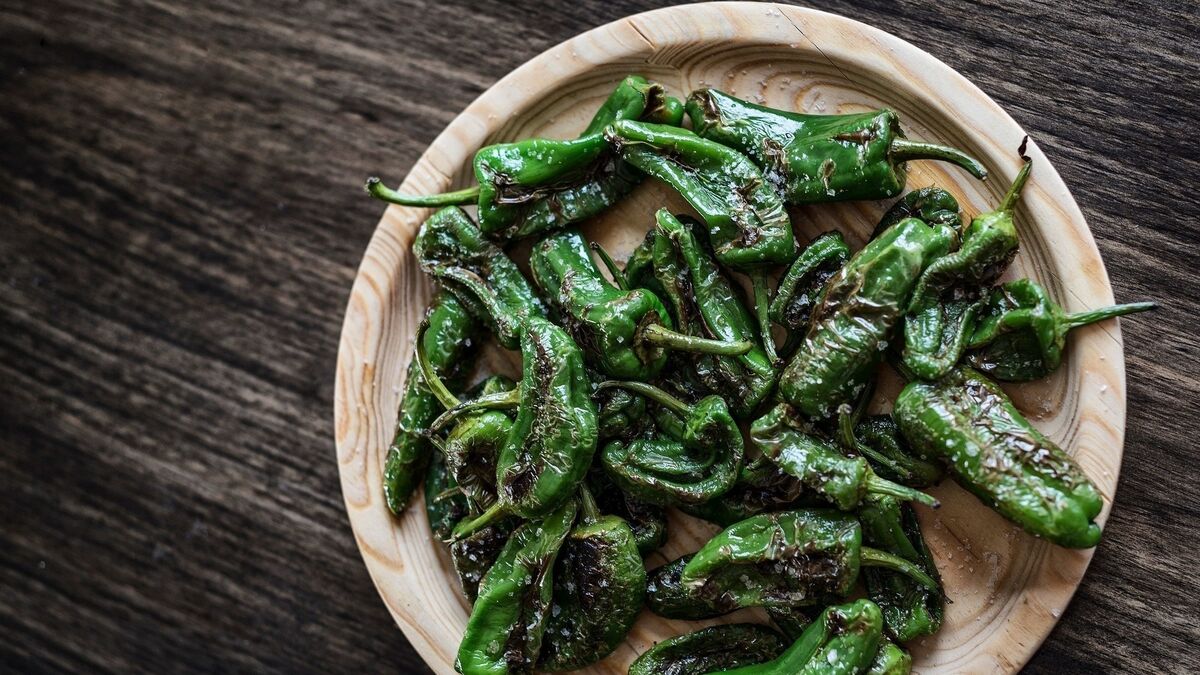
Servings
8Preparation Time
2 minsCooking Time
2 minsTotal Time
4 minsCourse
SideCuisine
SpanishIngredients
250g Padrón peppers
5 tbsp extra virgin olive oil
sea salt, to serve
Method
Wash the dust of the fields off the peppers and dry them carefully with a tea towel so they don’t spit when you add them to the pan.
Heat the olive oil in a wide pan that has a lid and, when warm, add the peppers. When the oil is hot and the peppers are frying, cover the pan. Allow to cook for two minutes, shaking from time to time. The peppers should not be browned all over, only softened.
Drain on kitchen paper and sprinkle with sea salt to serve.
Recipe from The Buenvino Cookbook by Jeannie & Sam Chesterton
Meatballs in tomato and orange sauce
These tasty meatballs can be made with minced beef or pork or a mixture of chicken and pork
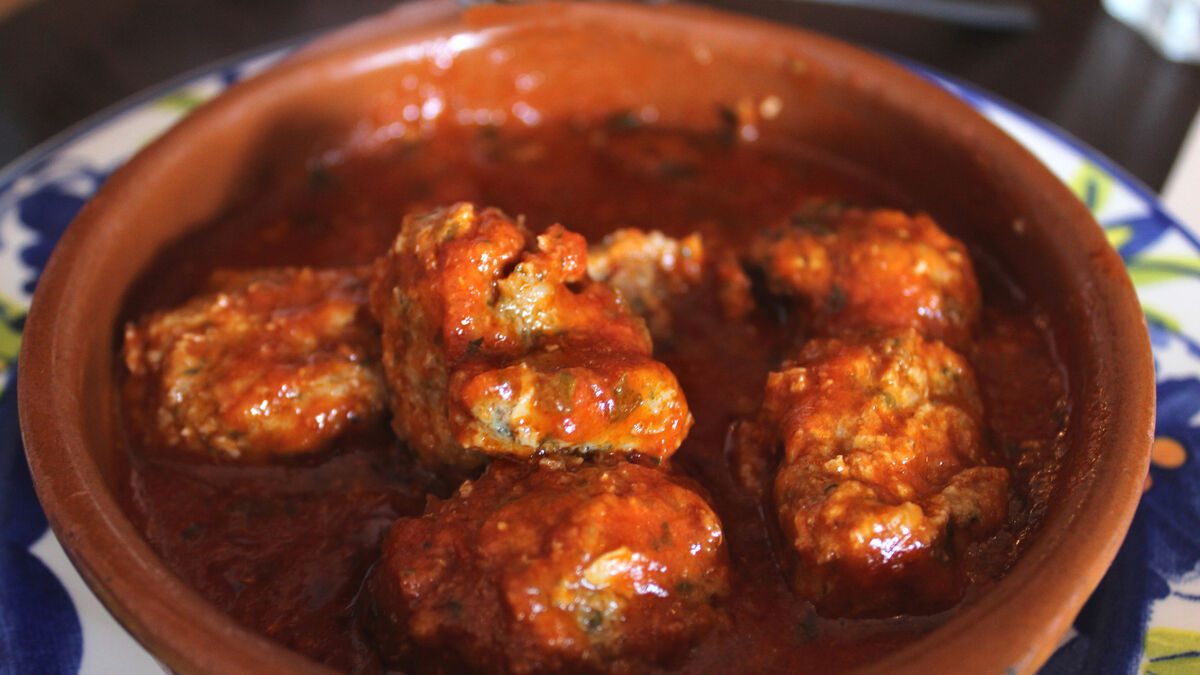
Servings
8Preparation Time
10 minsCooking Time
20 minsTotal Time
30 minsCourse
SideCuisine
SpanishIngredients
4 spring onions, finely chopped
2 garlic cloves, finely chopped
225g (8oz) minced beef or pork or a mixture of chicken and pork
2 tbsp grated Manchego cheese
2 tsp thyme leaves, plus more to serve (optional)
Salt and freshly-ground black pepper
1 tbsp olive oil, plus 2 tablespoons more to thicken (optional)
4 tomatoes, chopped
200ml (7fl oz) red wine
2 tbsp chopped rosemary leaves
½ tsp caster sugar
a little freshly grated orange zest, plus juice of 1 orange
2 tsp cornflour (optional)
chopped black olives (optional)
Method
Mix the spring onions and garlic with the meat, cheese and thyme in a bowl and season with plenty of salt and pepper.
Mould into little meatballs with the palm of your hand, then fry gently in 1 tablespoon of olive oil in a deepish pan, turning frequently until browned all over. Remove the meatballs, set on kitchen paper, and keep them warm in a low oven.
Add the tomatoes to the pan with the wine, rosemary, sugar, orange zest and juice and season with salt and pepper. Cook gently for 15 minutes or so.
If the sauce is too thin, mix the cornflour with the two tablespoons of olive oil to make a paste. Whisk 1 tablespoon of the paste into the sauce and bring it to the boil. Cook out until the sauce is thick and smooth (you probably won’t need the rest of the paste but keep it in case you want the sauce even thicker). Replace the meatballs and cook gently until warmed through.
Serve sprinkled with chopped black olives or more thyme.
Recipe from The Buenvino Cookbook by Jeannie & Sam Chesterton
Citrus and honey cake
This is an Eastern Mediterranean cake which is perfectly in tune with Spanish ingredients
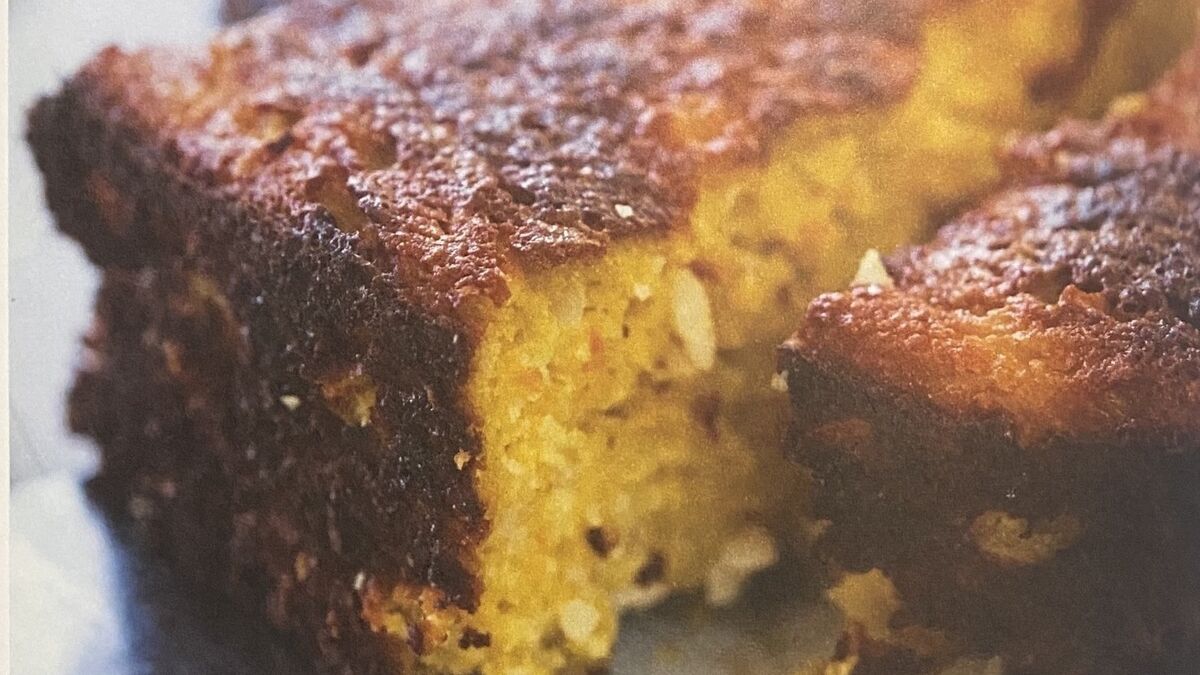
Servings
12Preparation Time
10 minsCooking Time
55 minsTotal Time
1 hours 5 minsCourse
BakingIngredients
For the cake:
For the cake:
175g (6oz) unsalted butter, softened, plus more for the tin
plain flour, for the tin
1 orange, washed
1 thin-skinned waxed lemon, washed
25g (1oz) roasted hazelnuts, plus 12 whole hazelnuts to decorate (optional)
110g (4oz) almonds
175g (6oz) Demerara sugar
3 large free-range eggs
250g (9oz) semolina
1 tsp baking powder
For the sauce:
225ml (8fl oz) runny honey, ideally orange blossom honey
4cm (1 ½ inch) cinnamon stick
juice of 1 orange
juice of ½ lemon
Creme fraiche, or a mixture of whipped cream with yoghurt, to serve (optional)
Method
Preheat the oven to 200°C/400°F/Gas Mark 6.
Butter a 25cm (10 inch) springform cake tin and line the base with greaseproof paper. Butter the paper too, then dust with plain flour, turning to coat the tin and tapping out the excess.
Cut the orange and lemon into quarters and remove all the pips. Grind up the nuts in a food processor, then add the citrus fruit and process together. It's good to leave some of the nuts slightly coarse, as it lends texture to the cake, and it's also not bad to encounter the odd bit of roughly chopped peel, so don't worry if it is not entirely smooth.
Beat together the butter, sugar, eggs, semolina and baking powder until you have a smooth mix. Stir in the fruit and nut purée. Spoon the mixture into the prepared tin, place on a central oven shelf and bake for 10 minutes.
Reduce the oven temperature to 180°C/350°F/Gas Mark 4 and bake for a further 45 minutes. Remove the cake and cook for five minutes. If you have buttered and floured your tin properly, it should come away easily from the sides when you unclip them. Remove the papers and place the cake on a wire rack over a wide plate.
Make a flavoured syrup by simmering the honey with 5 tablespoons of water and the cinnamon stick for five minutes. Fish out the cinnamon stick and add the citrus juices. Prick the cake all over and pour the syrup on to it, distributing it as widely as possible, as you want the whole cake to be dampened. Any juice which goes straight through on to the plate can be spooned back over when the cake is cold and on its serving dish.
Have ready in a bowl some creme fraiche, or a mixture of whipped cream and yoghurt and, just before serving, spread a thin layer on top of the cake and decorate with the roasted hazelnuts, split in half, if you like. Cut the cake at the table and hand around the rest of the cream in a bowl with a small spoon or sauce ladle.
Recipe from The Buenvino Cookbook by Jeannie & Sam Chesterton
Well done JP McMahon…Food On The Edge is back this year in the form of a blended symposium with a mix of in-person speakers with other speakers joining virtually. The venue for this year’s event is Airfield Estate, Dundrum in Dublin on October 18 and 19.
Confirmed speakers include: Garima Aurora, the first Indian woman to win a Michelin star; May Chow; Alice Zaslavsky; and returning to Food on the Edge this year, Mark Best, star of Netflix .
Virtual and in-house tickets are currently on sale (student discount available).
foodontheedge.ie
The Ballymaloe Craft Fair is taking place this year over two fantastic weekends, November 19-21 and November 26-28. If you love Irish craft and design as I do, then pop the dates into your diary or contact Bree to secure a stall —Bree@ballymaloe.com
@ballymaloe_grainstore on Instagram
Congratulations to Kinsale Mead Company which recently won a Great Taste Award for their Hazy Berry Summer Mead to join their flagship Atlantic Dry Mead which also previously won the award.
@KinsaleMeadCo on Instagram
Read More


